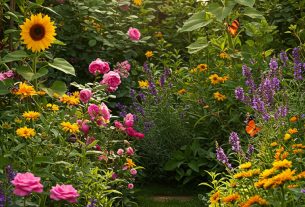As a passionate gardener, I often find myself pondering the best practices for watering my plants. I’ve spent countless hours researching and experimenting to determine whether it’s better to water my plants every day or just once a week. The answer, as it turns out, is not as straightforward as one might think. In this article, I will share my insights, experiences, and the best care tips I’ve gathered over the years to help you make informed decisions about your plant watering routine.
Understanding Plant Needs
Before diving into the specifics of watering frequency, it’s essential to understand that every plant has unique water requirements. Factors such as plant type, soil composition, climate, and growth stage significantly influence how much water your plants need. Here are some key considerations:
- Plant Type: Different species have varying needs. Succulents and cacti thrive in dry conditions, while tropical plants prefer consistently moist soil.
- Soil Composition: Well-draining soil allows water to flow through quickly, meaning more frequent watering is necessary. In contrast, heavy soils retain moisture longer.
- Climate: Hot, dry climates demand more frequent watering compared to cooler and more humid environments.
- Growth Stage: Young seedlings often need more consistent moisture, while mature plants can tolerate drier conditions.
The Daily Watering Debate
Watering plants every day seems like a foolproof method to keep them happy and thriving. However, this approach can lead to overwatering, which poses significant risks. Here’s what I’ve learned about daily watering:
- Potential for Overwatering: Daily watering can suffocate roots by preventing oxygen from reaching them, leading to root rot and other issues.
- Water Waste: In many cases, watering every day can lead to excessive water waste, especially if the plants aren’t using it all.
- Soil Saturation: Constantly wet soil can create an inhospitable environment for beneficial microorganisms.
In my experience, I’ve found that daily watering is suitable for specific plants, particularly those that thrive in high humidity or are in their active growth phase. However, it’s crucial to adjust the frequency based on environmental factors and soil moisture levels.
The Once-a-Week Approach
On the other hand, watering plants once a week is a more conservative and often safer approach. Here are some advantages I’ve discovered with this method:
- Encourages Deep Root Growth: Watering less frequently encourages plants to develop deeper root systems, making them more resilient.
- Reduces Overwatering Risks: A weekly schedule allows the soil to dry out, preventing root rot and other issues associated with excess moisture.
- Water Conservation: This approach is more environmentally friendly, helping to conserve water.
That said, I’ve learned that a one-size-fits-all approach doesn’t work for every situation. For example, in extremely hot weather, I often find that my plants benefit from additional watering, while during cooler months, their water needs significantly decrease.
Finding the Right Balance
So, how do we strike the perfect balance between daily and weekly watering? Here are some strategies I’ve implemented to ensure my plants receive the appropriate amount of water:
- Check Soil Moisture: Before watering, I always check the top inch of the soil. If it feels dry, it’s time to water; if it’s still moist, I wait a day or two.
- Observe Plant Needs: I pay close attention to my plants. If they appear droopy or their leaves are curling, it may be a sign they need water.
- Adjust for Seasons: I adjust my watering schedule based on the season. In summer, I might water twice a week, while in winter, once a week may suffice.
- Know Your Plants: Researching each plant’s specific needs has been incredibly beneficial. Some plants, like ferns, thrive in moist conditions, while others, like lavender, prefer drier soil.
Case Studies: Different Plants, Different Needs
To illustrate the importance of understanding plant-specific needs, let’s look at a few examples from my garden:
Succulents
In my succulent collection, I’ve discovered that these drought-resistant plants thrive on infrequent watering. I typically water them every two weeks, allowing the soil to dry out completely between waterings. This method has kept my succulents healthy and vibrant.
Tropical Plants
Conversely, my tropical plants, like the peace lily, require more frequent watering. I water them every four to five days, ensuring the soil stays consistently moist but not soggy. Adjusting my watering schedule based on their specific needs has led to lush, thriving plants.
Herbs
When it comes to my herb garden, I’ve learned that herbs like basil and cilantro prefer slightly moist soil. I water them about twice a week, ensuring they receive enough moisture for robust growth without becoming waterlogged.
Signs of Underwatering and Overwatering
Understanding the signs of both underwatering and overwatering is crucial for maintaining healthy plants. Here are the symptoms I’ve observed:
Underwatering Signs
- Wilting or drooping leaves
- Leaf edges turning brown and crispy
- Soil pulling away from the edges of the pot
Overwatering Signs
- Yellowing leaves that may fall off
- Root rot, which can be identified by a foul smell
- Mushy stems or leaves
Recognizing these signs early can help me adjust my watering habits promptly, ensuring my plants remain healthy and vibrant.
Watering Techniques and Tips
Aside from establishing a watering schedule, the technique I use to water my plants can also make a significant difference in their health. Here are some watering methods I’ve found effective:
Deep Watering
Instead of shallow watering, I prefer deep watering, which encourages roots to grow deeper into the soil. I apply water until I see it draining from the bottom of the pot, ensuring the entire root system gets adequate moisture.
Time of Day
Watering in the early morning or late afternoon has proven effective for my plants. This timing minimizes evaporation and allows the plants to absorb water more efficiently. I’ve noticed that watering during these times also helps reduce the risk of fungal diseases.
Using Mulch
Applying a layer of mulch around my plants has significantly helped retain soil moisture. Organic mulches, like wood chips or straw, break down over time and improve soil quality while reducing the need for frequent watering.
Conclusion: The Best Care Tips for Your Plants
After extensive research and experimentation, I’ve come to the conclusion that whether to water your plants every day or once a week largely depends on several factors, including plant type, soil conditions, and environmental factors. Here are the key takeaways from my journey:
- Understanding your plant’s specific needs is crucial for optimal growth.
- Daily watering can lead to overwatering, while weekly watering may be too infrequent for some plants.
- Checking soil moisture before watering is an effective way to determine when to water.
- Adjust your watering schedule based on seasonal changes and the specific needs of each plant.
- Pay attention to signs of underwatering and overwatering to make timely adjustments.
Ultimately, the best care for your plants stems from observation and adaptability. By taking the time to understand their unique requirements, I’ve transformed my gardening experience into a thriving oasis of greenery.
FAQ
How do I know when to water my plants?
The best way to determine when to water your plants is to check the top inch of the soil. If it feels dry, it’s time to water. Observing your plants for signs of stress, such as wilting or yellowing leaves, can also indicate they need water.
Can I water my plants with tap water?
Yes, most plants can tolerate tap water. However, if your tap water is high in chlorine or other chemicals, consider letting it sit out for 24 hours before using it to allow the chemicals to dissipate.
Is it better to water in the morning or evening?
Watering in the early morning or late evening is ideal as it minimizes evaporation and allows the plants to absorb moisture more effectively. Avoid watering during the hottest part of the day.
What is the best type of soil for retaining moisture?
Soils that contain organic matter, such as compost or peat moss, are excellent for retaining moisture while still providing good drainage, allowing roots to breathe.
If you found this article helpful, I encourage you to sign up for our newsletter for more gardening tips and share it with your friends on social media. Happy gardening!
35PCS Griddle Accessories Kit, Flat Top Grill Accessories Set for Blackstone and Camp Chef, Grill Spatula Set with Enlarged Spatulas, Basting Cover, Scraper for Outdoor Barbecue
$25.49 (as of 08/12/2025 04:03 GMT -03:00 - More infoProduct prices and availability are accurate as of the date/time indicated and are subject to change. Any price and availability information displayed on [relevant Amazon Site(s), as applicable] at the time of purchase will apply to the purchase of this product.)
Sign up for our newsletter and stay up to date with exclusive news
that can transform your routine!




